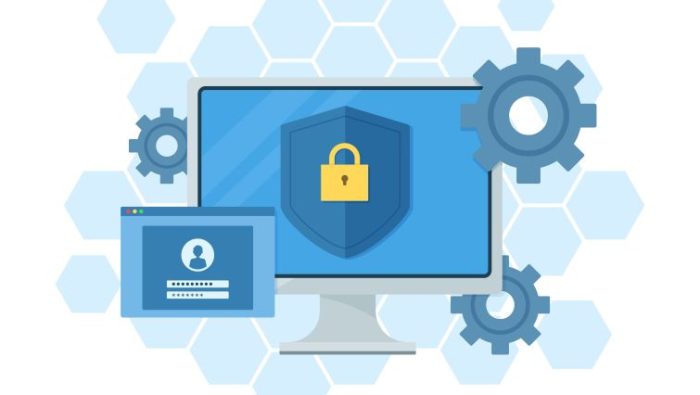Employee Expectations in the Cybersecurity Awareness Era: A 2024 Perspective
 Publié le 1 March 2024
Publié le 1 March 2024
Keeping data and information secure is just one of the important employee expectations in the cybersecurity awareness era.
In an age where digital transformation accelerates at an unprecedented pace, cybersecurity has emerged as a cornerstone of organizational resilience.
Photo by Pixabay: https://www.pexels.com/photo/security-logo-60504/
As we navigate through 2024, the landscape of employee expectations in relation to cybersecurity has evolved, as well as the need for transparency in cybersecurity policies reflecting broader shifts in work culture, technology, and global security dynamics.
The Rising Tide of Cybersecurity Awareness
In today’s digitally interconnected world, employee well-being has evolved to encompass more than just physical health and mental tranquility; it now also needs to include cybersecurity wellness.
As the boundaries between personal and professional lives blur thanks to remote work and digital collaboration platforms, employees increasingly expect their employers to extend their protective measures beyond the physical workspace.
This expectation is not unfounded; as personal data and professional work coexist on shared devices and platforms, the security of an employee’s digital persona directly impacts their overall well-being.
This dual focus on protection and prevention is essential for maintaining a healthy work environment, where stress and anxiety about potential cyber threats do not undermine employee satisfaction and productivity.
Implementing comprehensive cybersecurity solutions, conducting regular security training, and ensuring secure access to company networks and data are just a few examples of how employers can contribute to employee well-being in the cybersecurity era.
Prioritizing Cybersecurity Policies for a Safer Workplace
Among the myriad of policies that organizations can implement to address employee expectations in the cybersecurity era, three policies stand out as critical priorities in today’s cybersecurity landscape:
Password Sharing Policy
One of the foremost policies to prioritize is the implementation of a strict password sharing policy. This policy should unequivocally prohibit the sharing of passwords among employees, regardless of their position or relationship within the company.
Password sharing, while seemingly benign in certain contexts, poses a significant security risk, as it can lead to unauthorized access to sensitive information and systems. To enforce this policy effectively, organizations should provide employees with secure password management tools that encourage the use of strong, unique passwords for each service and enable secure sharing of access when absolutely necessary for operational purposes.
Data Access and Management Policy
A comprehensive data access and management policy is essential for controlling who has access to sensitive company data and how that data is handled, stored, and destroyed.
This policy should outline clear guidelines for data classification, access controls, and data lifecycle management, ensuring that employees understand their responsibilities regarding data privacy and security.
By limiting access to sensitive information to only those who need it to perform their job functions and enforcing strict controls on data management practices, organizations can significantly reduce the risk of data breaches and leaks.
Incident Response Plan
Finally, a well-defined incident response plan is critical for preparing employees and the organization for potential cybersecurity incidents. This plan should detail the steps to be taken in the event of a security breach, including immediate actions to contain the breach, communication protocols, and post-incident analysis procedures.
Training employees on the incident response plan and conducting regular drills can ensure that everyone knows their role during a cybersecurity incident, thereby minimizing the impact and improving the organization’s resilience against cyber threats.
Expectation of Transparency in Cybersecurity Policies
Amidst the growing concern for digital safety, transparency in cybersecurity policies has emerged as a fundamental employee expectation. Workers today demand to be informed about the cybersecurity measures their employers have in place to protect their personal and professional data.
This expectation extends beyond mere assurance of safety; employees seek clarity on the actions and protocols that will be activated in response to a cyber incident. Such transparency in cybersecurity policies not only cultivates a culture of trust between employers and their workforce but also empowers employees by making them informed participants in their own digital safety.
The call for transparency has led to a shift in how organizations communicate their cybersecurity strategies. It’s no longer sufficient to have robust defenses against cyber threats; companies must also articulate these measures clearly and accessible to their employees.
This involves detailing the tools and practices in use, the rationale behind their selection, and the steps taken to ensure data privacy and security.
The Evolution of Remote Work Security
Secure Remote Access as a Standard
The shift towards remote work has not only persisted but also reshaped how organizations approach workplace flexibility and security. In this context, secure remote access has become a non-negotiable standard for employees worldwide.
They now expect robust security measures such as Virtual Private Networks (VPNs), multi-factor authentication (MFA), and end-to-end encryption to be integral components of their daily work environment. This expectation reflects a heightened cybersecurity awareness among the workforce, who understand that remote work security is crucial to protecting organizational data and personal information alike.
As such, companies, having in mind both the profit and growth as well as employee well-being, are tasked with ensuring that their remote work infrastructures are fortified with advanced security technologies. This makes the digital work environment as secure as the traditional office setting.
The Need for Personal Device Security
The integration of personal devices into the professional workflow, a trend accelerated by remote and hybrid work models, has brought the issue of personal device security to the forefront of cybersecurity awareness initiatives.
Employees increasingly expect their employers to take proactive steps in extending cybersecurity measures to cover personal devices used for work purposes.
This includes the provision of antivirus software, secure communication tools, and the conduct of regular security audits. Such measures are essential in mitigating the risks associated with BYOD (Bring Your Own Device) policies, which, while offering flexibility and convenience, introduce significant cybersecurity vulnerabilities.
Organizations are thus encouraged to develop and implement comprehensive device management policies that address these risks, ensuring a secure and resilient digital work environment.
Empowering Employees with Cybersecurity Training
Continuous Cybersecurity Education
The rapidly evolving nature of cyber threats has made continuous cybersecurity education a critical expectation among employees. Workers seek regular, up-to-date training sessions that address the latest in cybersecurity trends, threats, and best practices.
This ongoing education is not only seen as vital for the security of the organization but also as an integral part of employees’ professional development, employee well-being, and personal security strategy.
Hands-on Cybersecurity Training Experiences
There is a growing demand for hands-on cybersecurity training among employees. This includes engaging in cybersecurity drills, participating in phishing simulation exercises, and attending interactive workshops designed to mimic real-world cyber threats.
Such practical training methods are increasingly recognized as essential elements of an effective cybersecurity awareness program. They equip employees with the confidence and competence to navigate the complexities of the cybersecurity world, reinforcing the organization’s defenses against cyber attacks.
Through these immersive experiences, employees gain a deeper understanding of the potential threats and learn proactive measures to mitigate these risks, thereby enhancing the overall security posture of the organization. All of these steps can help properly address employee expectations in the cybersecurity awareness era.







